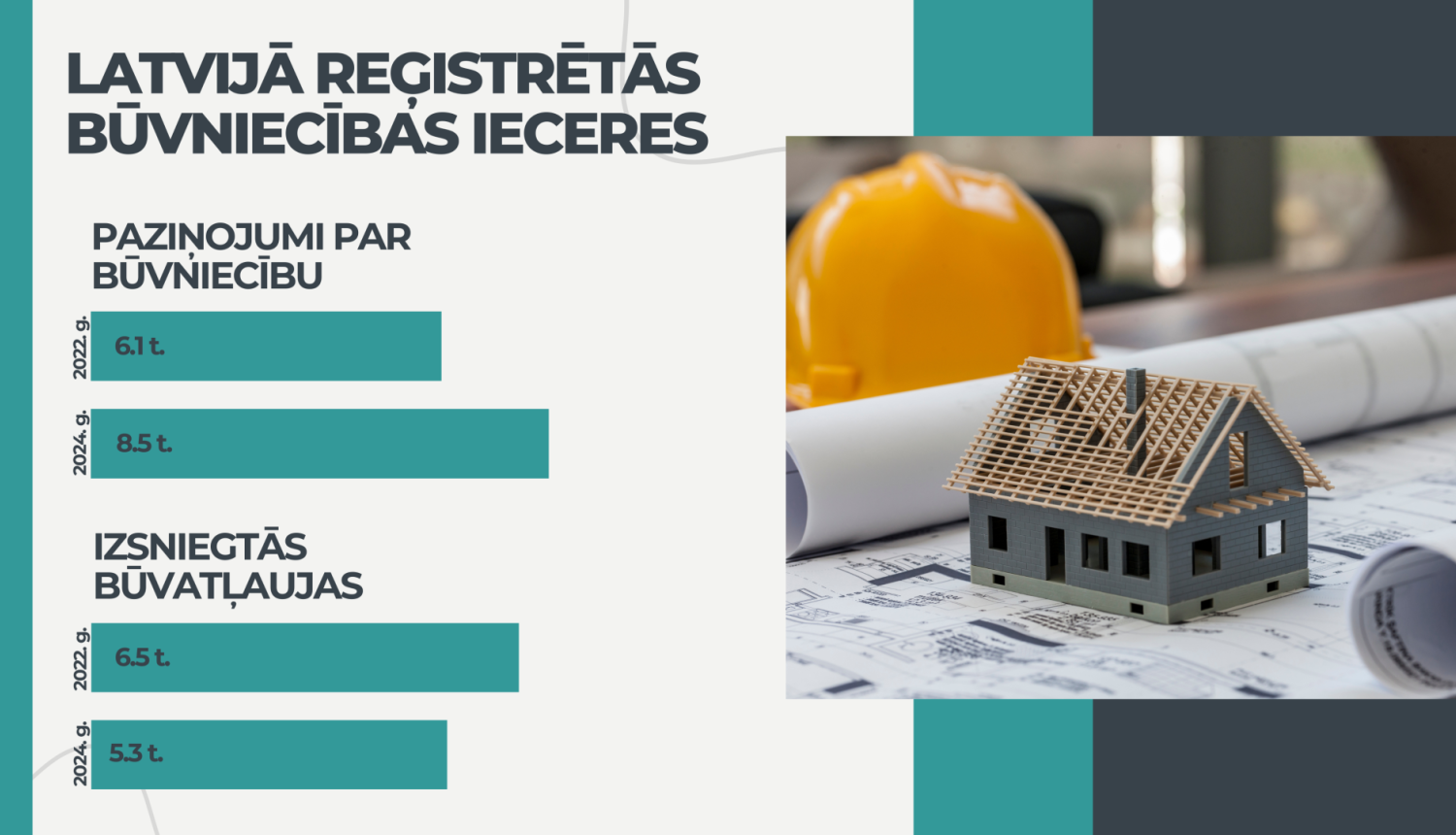Translated using ChatGPT service.
The course taken by the Ministry of Economics (MoE) to reduce bureaucracy in the construction sector has delivered results – an increasing number of project initiators are using simplified requirements to implement their construction intentions.
In 2022, there were 6.1 thousand registered construction notifications in Latvia; by 2024, this number had grown to 8.5 thousand. At the same time, the number of building permits issued has decreased, as initiators are increasingly using simplified documentation options. For example, in 2022, 6.5 thousand building permits were issued, while in 2024 – 5.3 thousand.
“Data show that the Ministry of Economics' efforts to reduce bureaucratic barriers in construction have been successful – people appreciate the simplification of required documentation and are using the opportunity to carry out many works themselves. This reflects the population's willingness to formalize their property and related documentation, demonstrating a responsible approach. The observed changes confirm that we are heading in the right direction and that this work must continue,” stated Minister of Economics Viktors Valainis.
To promote a more efficient, faster, and predictable construction process in Latvia, the MoE has implemented a series of essential reforms that significantly reduce the administrative burden. These measures not only facilitate the realization of construction projects but also reduce costs and accelerate decision-making, covering aspects such as construction works, design, building registration, and public participation.
Improved construction process:
-
The construction documentation process has been significantly streamlined – duplicate records are no longer required, and in cases of repetitive work, daily entries no longer need to repeat the same information.
-
Construction supervision during building works is no longer mandatory (except for cultural monuments), and this is now at the discretion of the property developer. The design process has also been improved – design work continues until commissioning, with a clear procedure and accountability for changes made during construction and for further detailing of the construction project.
-
Reuse of building materials has been simplified – promoting circular economy principles and efficient resource use. There is no longer a need for complex conformity assessments for materials reused in finishes and non-load-bearing structures.
-
Buildings can now be commissioned in stages (except for multi-apartment residential buildings). This is particularly important for logistics centers and other large-scale industrial facilities. As building sizes increase with technological advancement and shifting market demands, the ability to develop and commission such buildings in parts significantly accelerates property development and allows earlier usage.
-
It is now possible to begin preparatory construction works (e.g., site preparation, earthworks, utility connections) in parallel with technical project development, which further shortens the timeline for real estate development.
Simplified process for prefabricated buildings:
-
Easier procedures for both design and site placement.
-
Introduction of a "building passport" that effectively replaces the full design and construction documentation – only a general plan and foundation solution need to be developed.
-
For prefabricated buildings up to 150 m², a simplified design document – an explanatory note – is sufficient instead of a full building permit, offering a faster and more straightforward approach.
Additionally, other improvements have been made to reduce bureaucracy and administrative barriers in construction – for example, eliminating regulatory conflicts between construction and land registration in the Land Register that previously delayed the registration of small buildings (up to 25 m²). A solution has been introduced allowing such buildings to be constructed through a notification procedure and registered in the Land Register without a formal decision from the building authority.
Further improvements are also expected soon. Amendments to the Construction Law have been approved by the government and supported in two readings by the Saeima. These will enhance the preparation and planning process of construction projects:
-
A clear and simplified process for obtaining design-related data.
-
Utility network owners will be required to provide and, if necessary, obtain up-to-date information on the location of networks within a property. This will reduce construction-related risks, avoiding the need to halt work or revise projects.
-
Clear conditions for receiving technical specifications and coordinating construction projects.
-
Shorter deadlines for issuing and approving technical specifications. A ban on charging fees for issuing or clarifying the content of technical specifications. A ban on including requirements in technical specifications that are not directly necessary for the implementation of the construction intention. Municipal building authorities will be required to justify requests for coordination with third parties (e.g., state or municipal institutions, utility providers). The validity of technical specifications has been extended to two years, providing greater stability in the design process.
The government has also adopted a decision to implement a unified building registration process starting in 2026. Technical work is currently underway to ensure data integration between the Construction Information System, the State Land Service, and the State Unified Computerized Land Register. The main objective of this process is to ensure a one-time data submission and reusability, eliminating the need for cadastral surveying of buildings.



